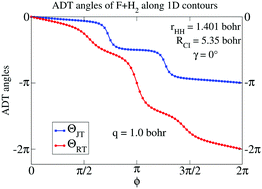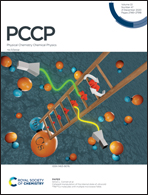The role of electron–nuclear coupling on multi-state photoelectron spectra, scattering processes and phase transitions†
Abstract
We present first principle based beyond Born–Oppenheimer (BBO) theory and its applications on various models as well as realistic spectroscopic and scattering processes, where the Jahn–Teller (JT) theory is brought in conjunction with the BBO approach on the phase transition of lanthanide complexes. Over one and half decades, our development of BBO theory is demonstrated with ab initio calculations on representative molecules of spectroscopic interest (NO2 radical, Na3 and K3 clusters, NO3 radical, C6H6+ and 1,3,5-C6H3F3+ radical cations) as well as triatomic reactive scattering processes (H+ + H2 and F + H2). Such an approach exhibits the effect of JT, Renner–Teller (RT) and pseudo Jahn–Teller (PJT) type of interactions. While implementing the BBO theory, we generate highly accurate diabatic potential energy surfaces (PESs) to carry out quantum dynamics calculation and find excellent agreement with experimental photoelectron spectra of spectroscopic systems and cross-sections/rate constants of scattering processes. On the other hand, such electron–nuclear couplings incorporated through JT theory play a crucial role in dictating higher energy satellite transitions in the dielectric function spectra of the LaMnO3 complex. Overall, this article thoroughly sketches the current perspective of the BBO approach and its connection with JT theory with various applications on physical and chemical processes.

- This article is part of the themed collections: PCCP Perspectives and 2020 PCCP HOT Articles


 Please wait while we load your content...
Please wait while we load your content...